Should a kitchen floor be lighter or darker than cabinets? The lowdown from experts
Discover designer advice on whether a kitchen floor should be lighter or darker than cabinets
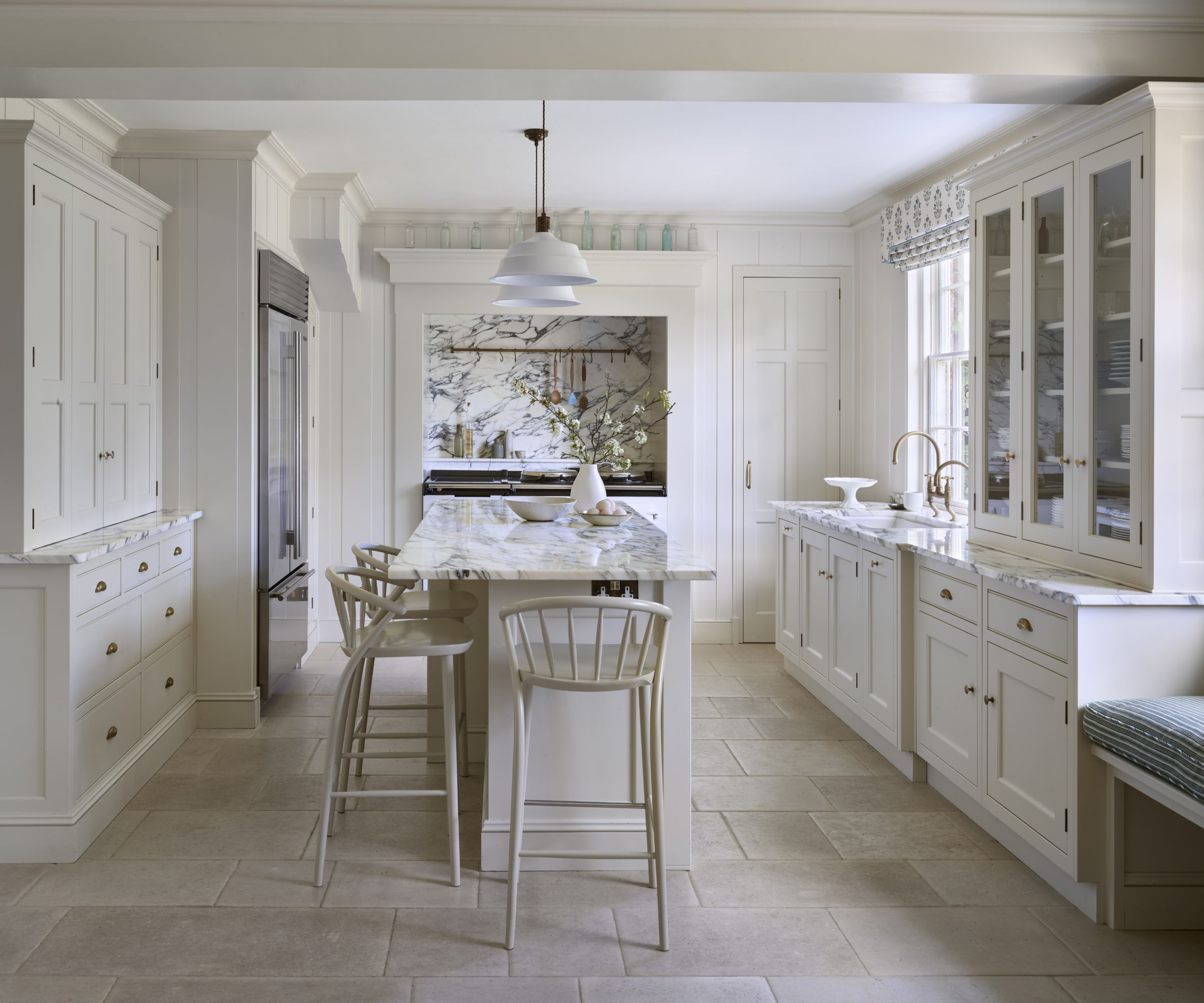

If you’re starting a remodel, you might be asking: should a kitchen floor be lighter or darker than cabinets? After all, both kitchen flooring and cabinets will account for a large slice of the room’s budget, and you’ll want to be content that the two choices work well together as well as looking great in individual terms.
In selecting kitchen flooring ideas the qualities of the various choices on offer in terms of their durability and slip-resistance are important but also crucial to the overall aesthetic is its color, including how this complements kitchen cabinet ideas.
So should a kitchen floor be lighter or darker than cabinets? We asked designers to share their expertise on how to approach this question.
Should a kitchen floor be lighter or darker than cabinets?
The answer to the question should a kitchen floor be lighter or darker than cabinets is that there isn’t a single hard and fast rule. However, that’s not bad news because there are principles you can follow to find the best kitchen floor and the choice will allow you to create the right aesthetic in the room.
But why isn’t there one answer to the question? ‘There are several factors to take into consideration when choosing the color of your kitchen flooring,’ explains Inga Morris-Blincoe, general manager of Lifestyle Floors. ‘Whilst cabinets are usually the most dominant feature of a kitchen, room size, natural light and personal design preferences all play a part in creating a balanced feel.’
These are the strategies you can adopt that promise to bring great results.
1. Opt for darker cabinets and a lighter floor
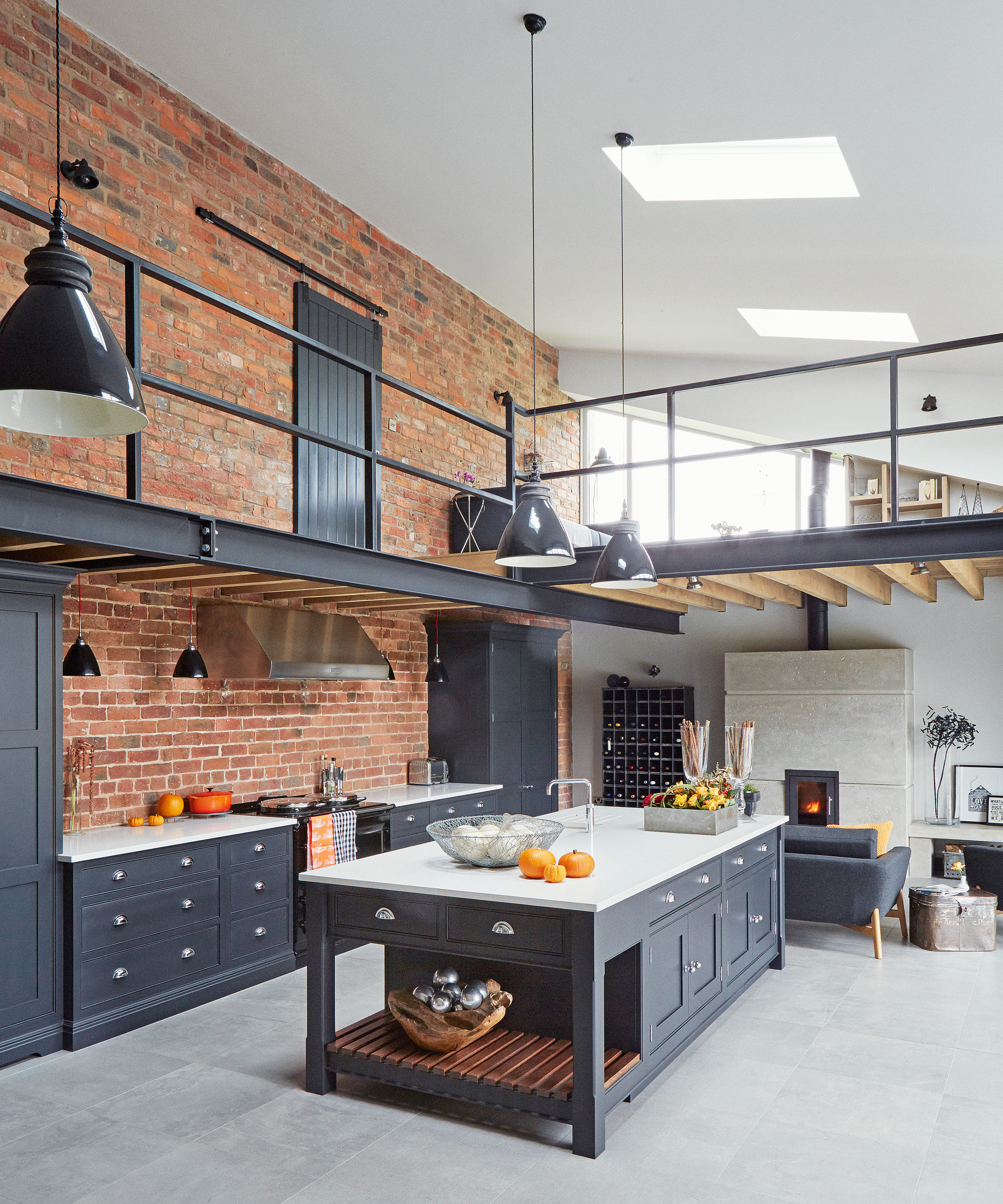
If you’re looking for a simple approach that will produce a pleasing design, go for a lighter floor and darker cabinets.
‘Typically, darker cabinets are coupled with a lighter floor color to break up the space and to prevent the kitchen from feeling too enclosed,’ says Chris Dance, head designer and director at InHouse Inspired Room Design. ‘With lighter cabinets, there’s often a greater diversity of flooring choices.’
2. Go for a lighter floor to put the focus on cabinets
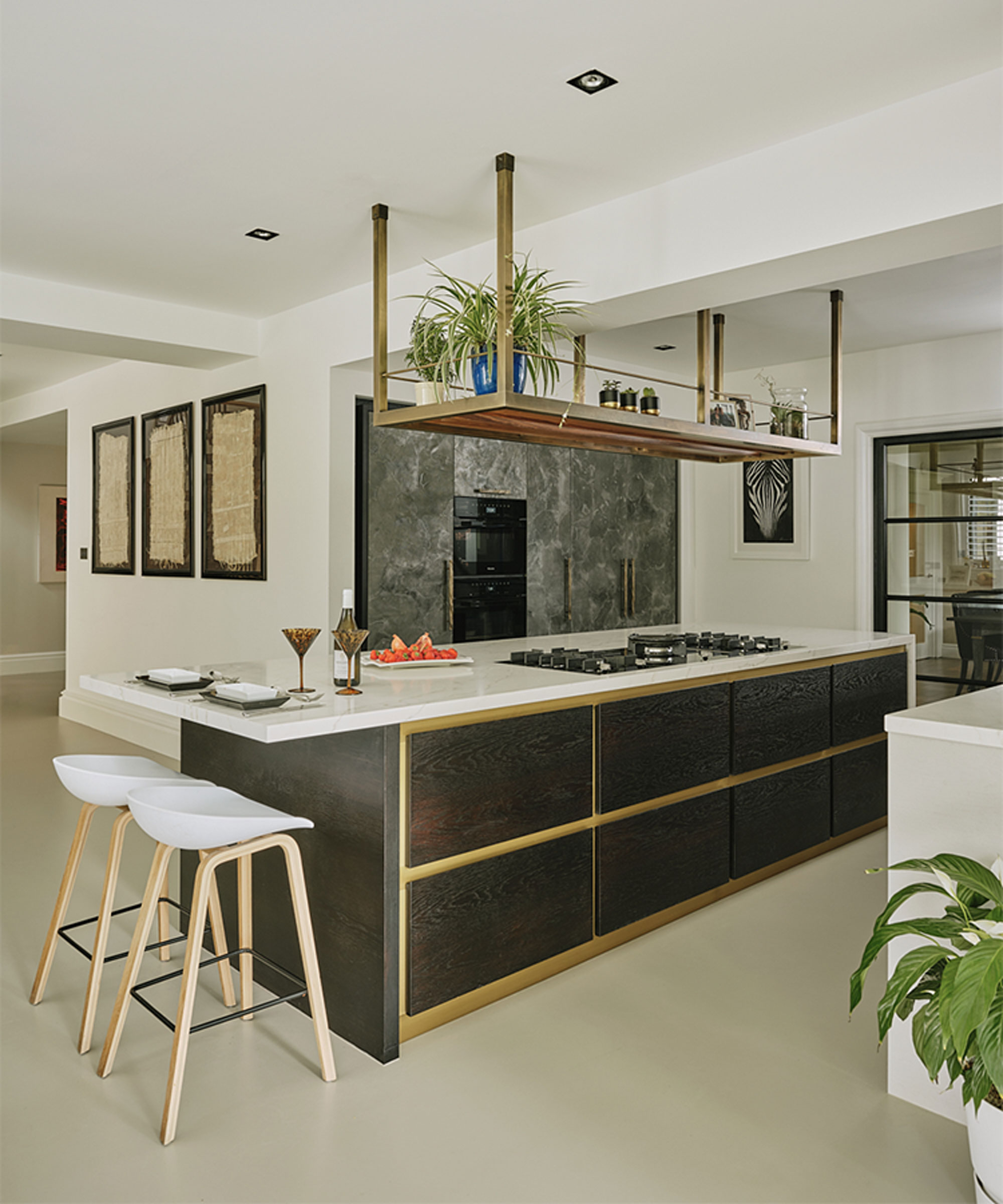
A lighter floor is also recommended when you want the cabinets to be the stars of the show.
‘Often the floor is the largest surface area in the room, so it’s one of the biggest influences on the look and feel of the overall space,’ notes interior designer Shalini Misra, founder of Shalini Misra.
‘If you want your cabinets to take center stage, then I’d advise on going lighter on the floors. Especially if you have invested in serious cabinetry, or the cabinets are particularly ornate or detailed, then you don’t want to detract from this – consider toning the floor down to create a plain canvas that helps them to sing.’
3. Opt for a darker floor in a large kitchen
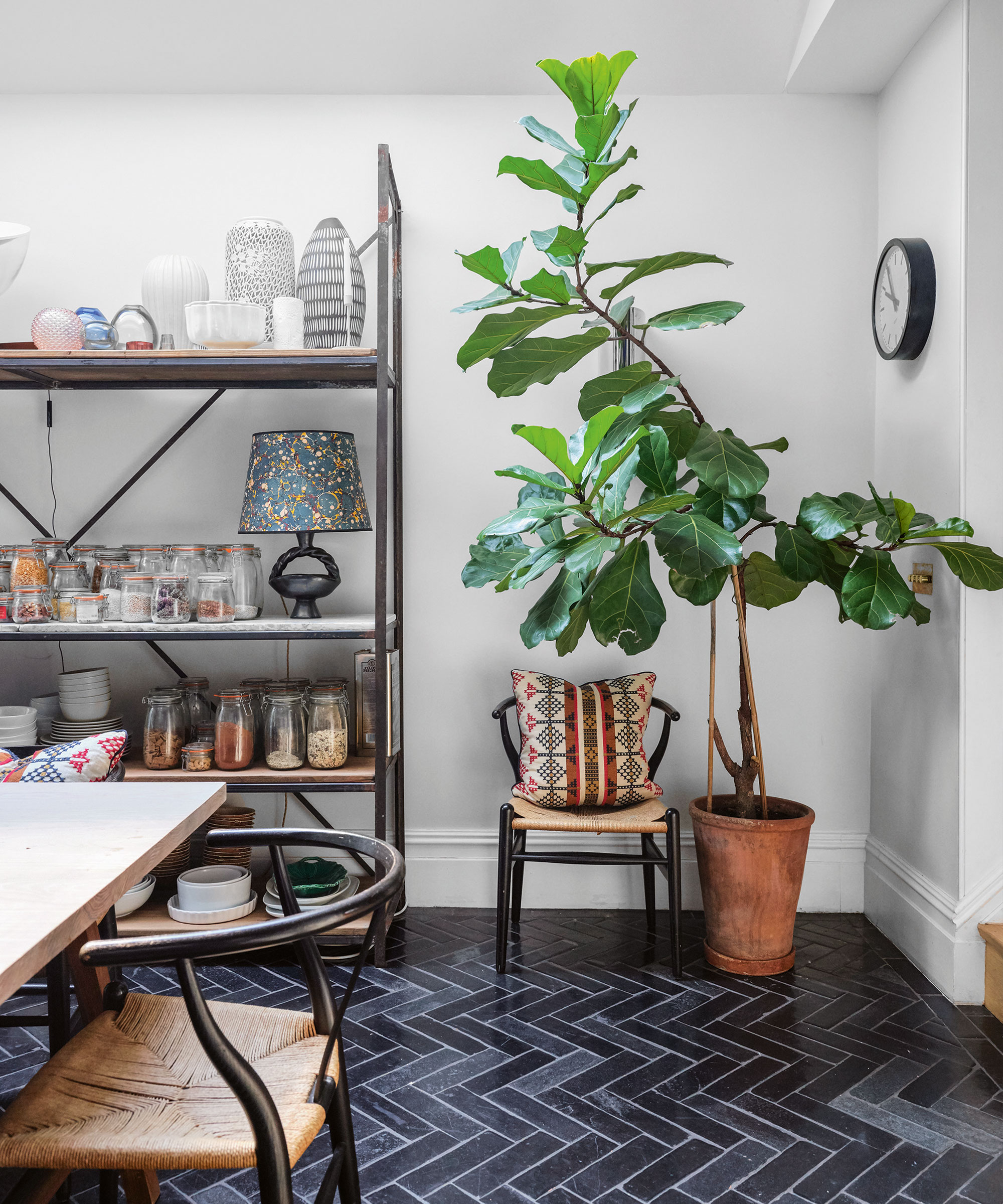
Here’s an exception to the kitchen floor lighter than cabinets route. It applies to bigger kitchens.
‘To make a larger kitchen space feel more intimate, darker flooring paired with mid-toned neutral cabinets is a great option to add a feeling of comfort without minimizing the spacious feel of the room,’ says Dawn Filkins, head of creative, Smile Kitchens.
But think kitchen orientation if you’re attracted by this combination. ‘Adding darker features in a north-facing room will make the room seem smaller and colder,‘ cautions Dawn.
4. Create drama with darks
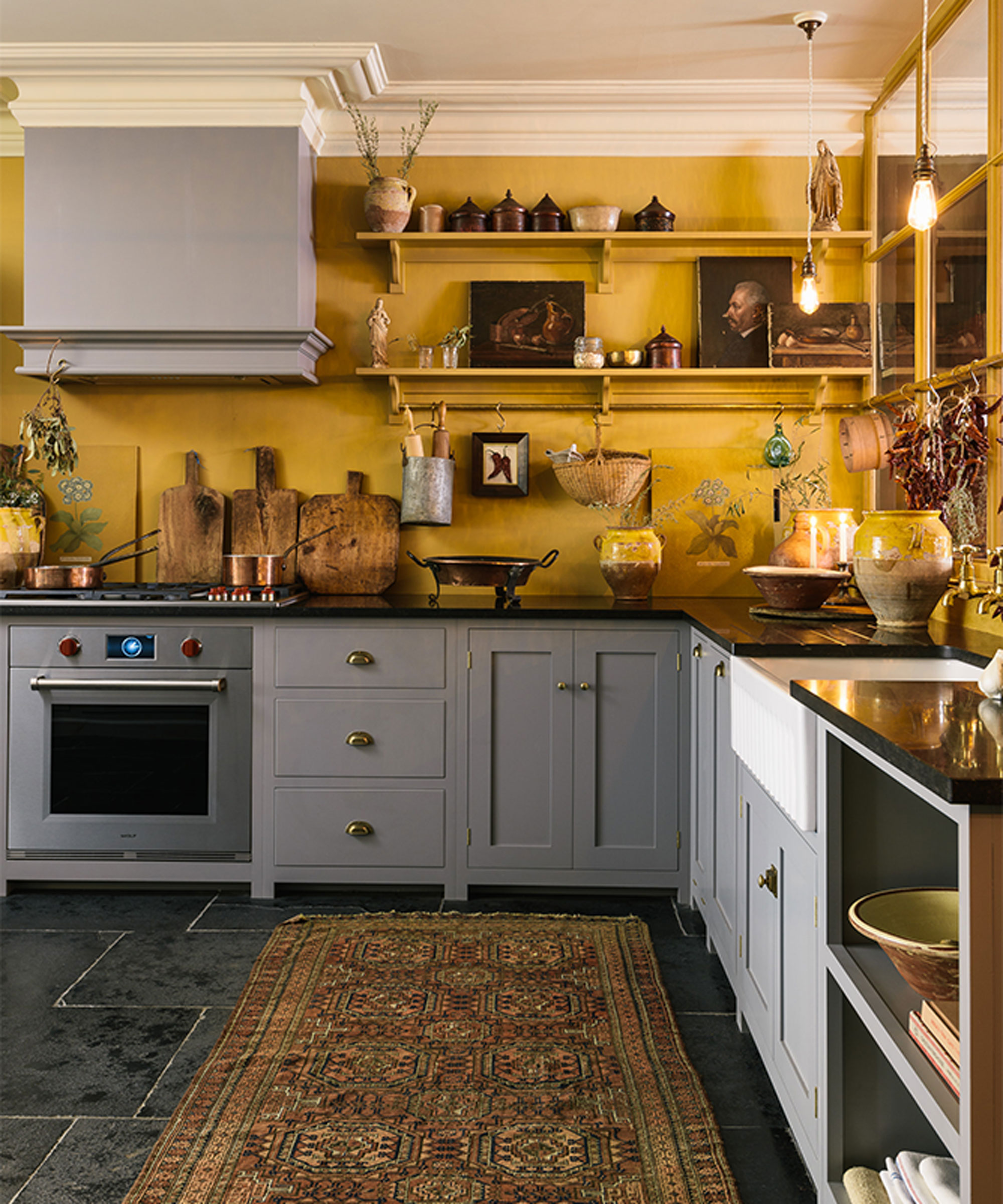
A dark floor could, of course be necessary to create the aesthetic you’re hankering after.
‘If you want to create a really dramatic effect, then opting for a dark floor is perfect as it’ll help to make the room feel really moody,’ says interior designer Shalini Misra. ‘You can even pair dark cabinets with a darker floor in similar tones to make a real statement.’
5. Pick a neutral floor for flexibility
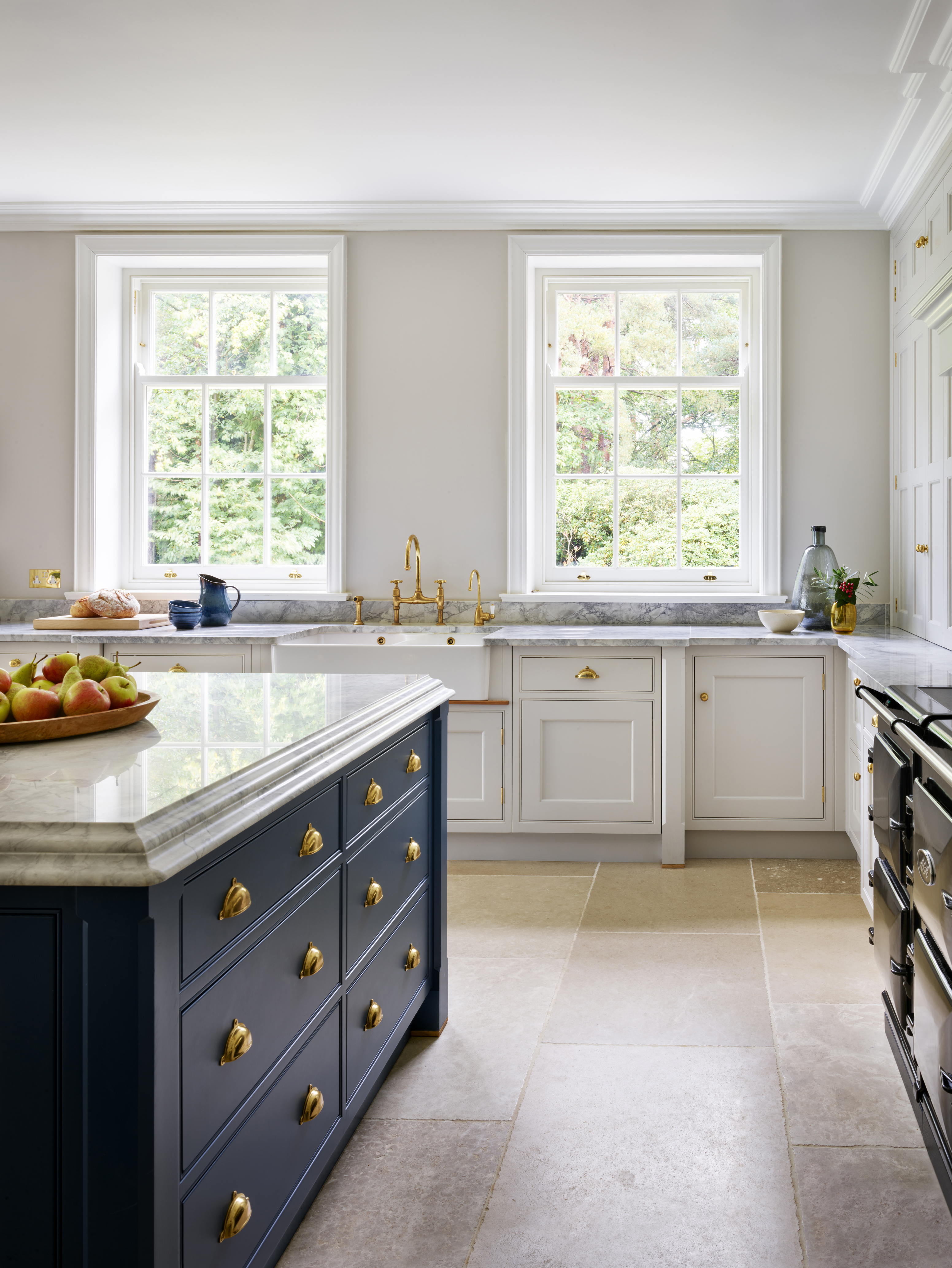
There’s a flooring choice that can look great whether cabinets are lighter or darker. ‘Use a neutral wood floor or stone floor which will generally work well with any style or color of cabinet,’ says Ben Burbidge, managing director, Kitchen Makers.
Wondering if swerving the contrast of a darker floor with lighter cabinets will look bland? The texture of wood or stone will ensure this isn’t an issue. ‘If keeping with light cabinets and light flooring, I often recommend using different textured countertop ideas and floors to introduce depth and detail,’ says designer Chris Dance.
6. Avoid exactly the same color

While designers do say that a kitchen floor can be lighter or darker than cabinets, depending on the room, there’s one combination they stress you should avoid: using the same color all over for both.
‘The one strong recommendation is don’t have both floor and cabinets in exactly the same shade – unless you can mix it up a bit on either, with a subtle two-tone effect over different cabinets or with a pattern of some kind on the floor, even just in terms of how it is laid,’ says Julia Brown, design director, Mowlem & Co North East.
Should a kitchen floor be dark?
A kitchen floor shouldn’t necessarily be dark – but it can be. Going for a dark kitchen floor, after all, is practical. ‘Darker floors are generally more forgiving in terms of durability and maintenance,‘ advises Julia Brown, design director, Mowlem & Co North East. There is a caveat, however. ‘They can also absorb the light rather than reflect it, so if light is restricted, go for something paler and more neutral,’ she says.
Interior designer Shalini Misra agrees. ‘A lighter floor will help to reflect light, so if you have a more compact or darker kitchen, then consider the floor as a surface that is there to assist in bouncing more light in and around the space,’ she says.
What is the best color for kitchen floors?
The best color for kitchen floors depends on the aesthetic you want to create – as well as how much light the room receives. Always consider kitchen floor color as part of the overall palette for the room, which includes cabinets and countertops, too.
As a general rule, you might pick from three options, the first of which is a neutral stone or wood floor, which will have enduring style and can be combined with your preferred shades for cabinets and countertops.
Alternatively, ‘select a decorative material such as kitchen floor tile or vinyl kitchen flooring picking out complementary or tonal colors to create harmony’, suggests Ben Burbidge, managing director of Kitchen Makers. Or try ‘contrasting colors like a black and white monochromatic scheme’, he says.
Sign up to the Homes & Gardens newsletter
Design expertise in your inbox – from inspiring decorating ideas and beautiful celebrity homes to practical gardening advice and shopping round-ups.

Sarah is a freelance journalist and editor. Previously executive editor of Ideal Home, she’s specialized in interiors, property and gardens for over 20 years, and covers interior design, house design, gardens, and cleaning and organizing a home for Homes & Gardens. She’s written for websites, including Houzz, Channel 4’s flagship website, 4Homes, and Future’s T3; national newspapers, including The Guardian; and magazines including Future’s Country Homes & Interiors, Homebuilding & Renovating, Period Living, and Style at Home, as well as House Beautiful, Good Homes, Grand Designs, Homes & Antiques, LandLove and The English Home among others. It’s no big surprise that she likes to put what she writes about into practice, and is a serial house renovator.
-
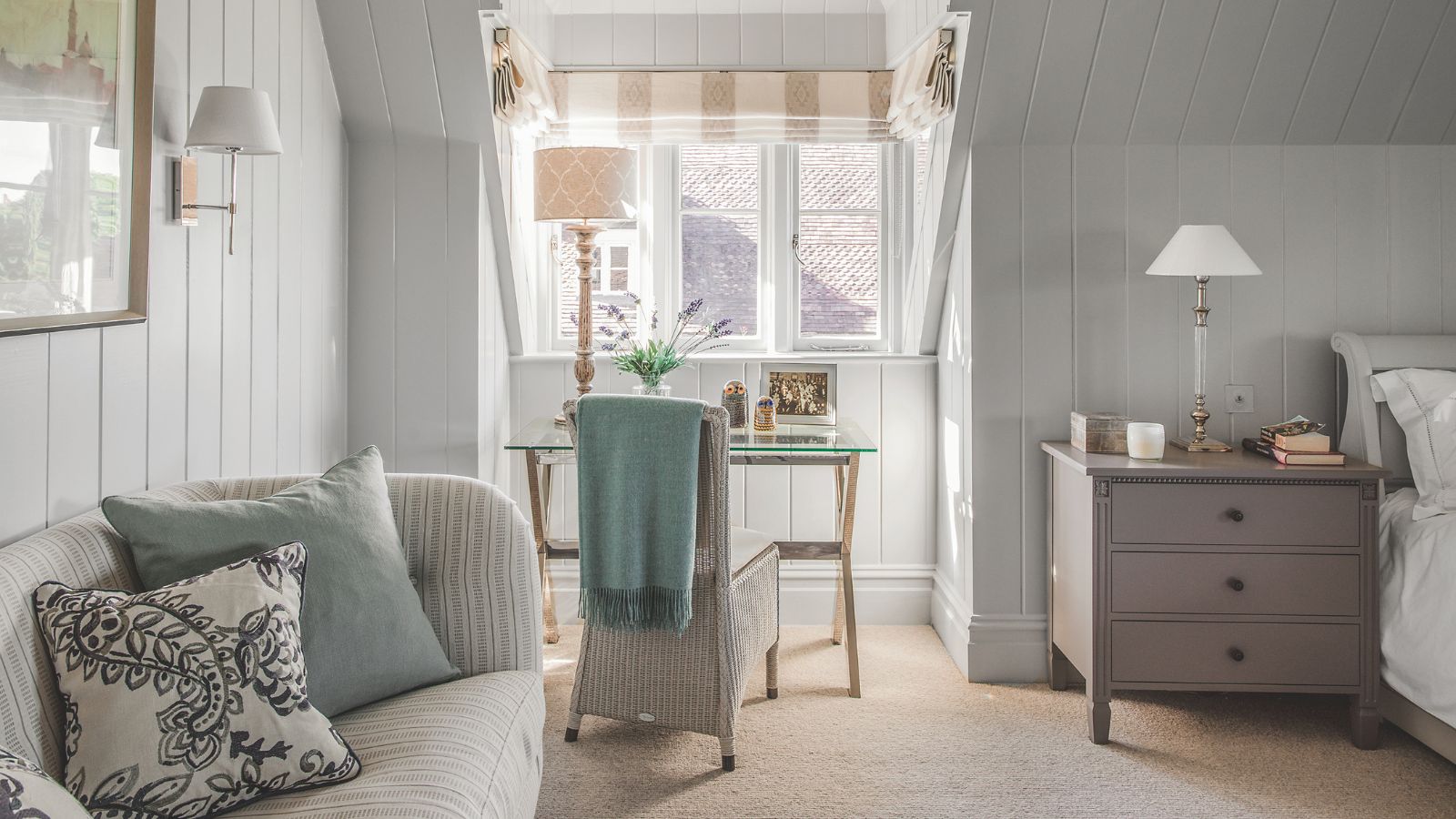 What is cozymaxxing and have you tried it yet? Here are 7 ways to embrace the trend and create an oasis of calm
What is cozymaxxing and have you tried it yet? Here are 7 ways to embrace the trend and create an oasis of calmExperts reveal how to take the cozymaxxing trend from social media into your home with color, texture, lighting and natural materials
By Emilia Hitching
-
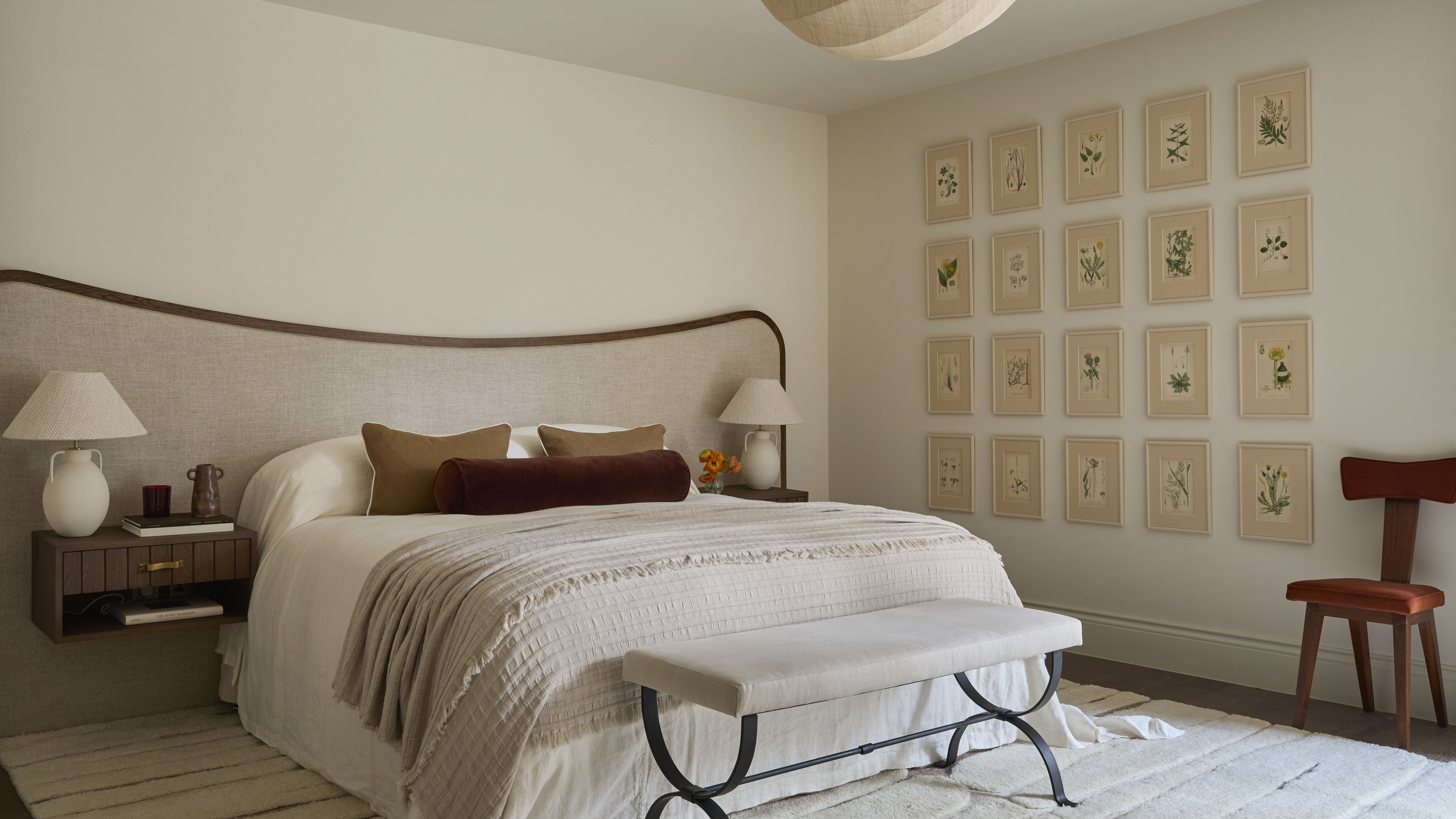 Mid-century modern bedroom ideas – 9 ways to channel this classic style with a current and contemporary feel
Mid-century modern bedroom ideas – 9 ways to channel this classic style with a current and contemporary feelThis timeless interior design style is defined by organic shapes, earthy neutrals, and a focus on functionality, qualities that make it a great choice for a bedroom
By Lilith Hudson